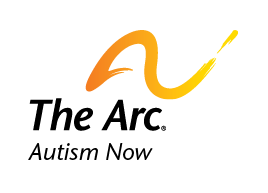Living My Dream: A Panel Discussion
by Amy Goodman, Co-Director
On April 11th, 2013, I attended the West Virginia Association of Positive Behavior Support conference in Summersville, West Virginia. It was entitled “Building a Culture of Positive Behavior Support.” I participated in a panel discussion called Living My Dream, where I was identified as an individual on the autism spectrum. We discussed the following questions:
- Describe what has been your most important dream.
- Who has been the person or people that have been important in supporting you to realize your dream?
- Do you think your dream is a path or is the dream the final end of the path?
- Do you feel like you fully realized your dream?
- What have been some things, other than people, that have helped you to realize your dream? Have you ever used tools like PATH (Planning Alternative Tomorrows with Hope) or MAP (Making Action Plans)?
- What barriers have prevented you from realizing your dream? Have you overcome these challenges?
- If someone asks how to realize their dream or support another person in achieving theirs, what would you tell them? What would you tell them is the first step?
These questions sparked interesting discussions; therefore, I am sharing some of my answers in hopes that it will motivate others to go after their own dreams and aspirations:
My dream has had many parts to it. The ultimate goal is to buy my own home and be independent with no supports from the government. I went to graduate school and got a Master’s Degree in Special Education, with a focus on Autism. After graduation, I got a job where I needed a car so I bought my first car. _ years later, I landed a job in Washington DC, as Co-Director of the Autism NOW Center, which has afforded me the opportunity to get off of all my government supports, such as SSI and Medicaid. My next goal is to be able to move out on my own, buy a house and be able to pay a mortgage.
The people who have been the most supportive in helping me to realize my dreams are my parents, my friends and colleagues at the Autism Training Center and the Developmental Disability Council, and my good friend Kent, the person who introduced me to autism and Asperger’s syndrome. If it weren’t for Kent, I never would have realized I was on the spectrum and never would have come as far as I have in the last 10 years.
The dream is a path, a never ending circle. For me, the next step is owning my home debt free. I have not fully realized my entire dream yet. I still have a few transition steps to work on before I can make my dream a reality.
Things other than people that I utilized to help make my dreams come true are Social Security Income (SSI) and a program that is part of Social Security called Plan to Achieve Self-Support (PASS). I wrote a plan that helped me determine what type of car I wanted to buy, how much it will cost, and a schedule as to how much money I would have to put aside each month to purchase the vehicle. I also used food stamps when I was going to graduate school to pay for my food. I was in a college program for students with ASD. I wrote a PATH, a plan of your dream in pictures: what it is, how you will get there, what steps you need to accomplish, who on your team will be responsible for each activity to accomplish the dream.
Some things that have been hurdles to accomplishing my dreams have been: 1) fear of the unknown, 2) anxiety of not having a job and not having enough money to buy what I need to be self-sufficient, 3) the death of my father, who was my best friend and biggest advocate, and 4) grieving and waiting until the appropriate transition can take place.
To realize one’s dream, the first step is to have a dream or identify what that dream is. The next step involves sitting down with family members and support personnel to map out this dream. Make a plan on what you need to do, start at the bottom of the ladder and climb up to the sky. The sky’s the limit. Don’t let anyone or anything stop you from making your dream a reality. Explore all possibilities, and make adjustments when things don’t work out the way you planned. Persevere and don’t take “no” for an answer. Never give up on your dream. Modify, reflect, and keep trying no matter how hard or how long it takes you. If there’s a will, there’s a way.
If Thomas Edison had given up on his dream, where would we be? Answer: In the dark. He tried 350 different ways to make the light bulb work. It’s not a failure; it’s just another way that doesn’t work. Try, try, and try again until you succeed. If you want it bad enough, you can make it work. It just takes time and patience because it doesn’t happen overnight.
